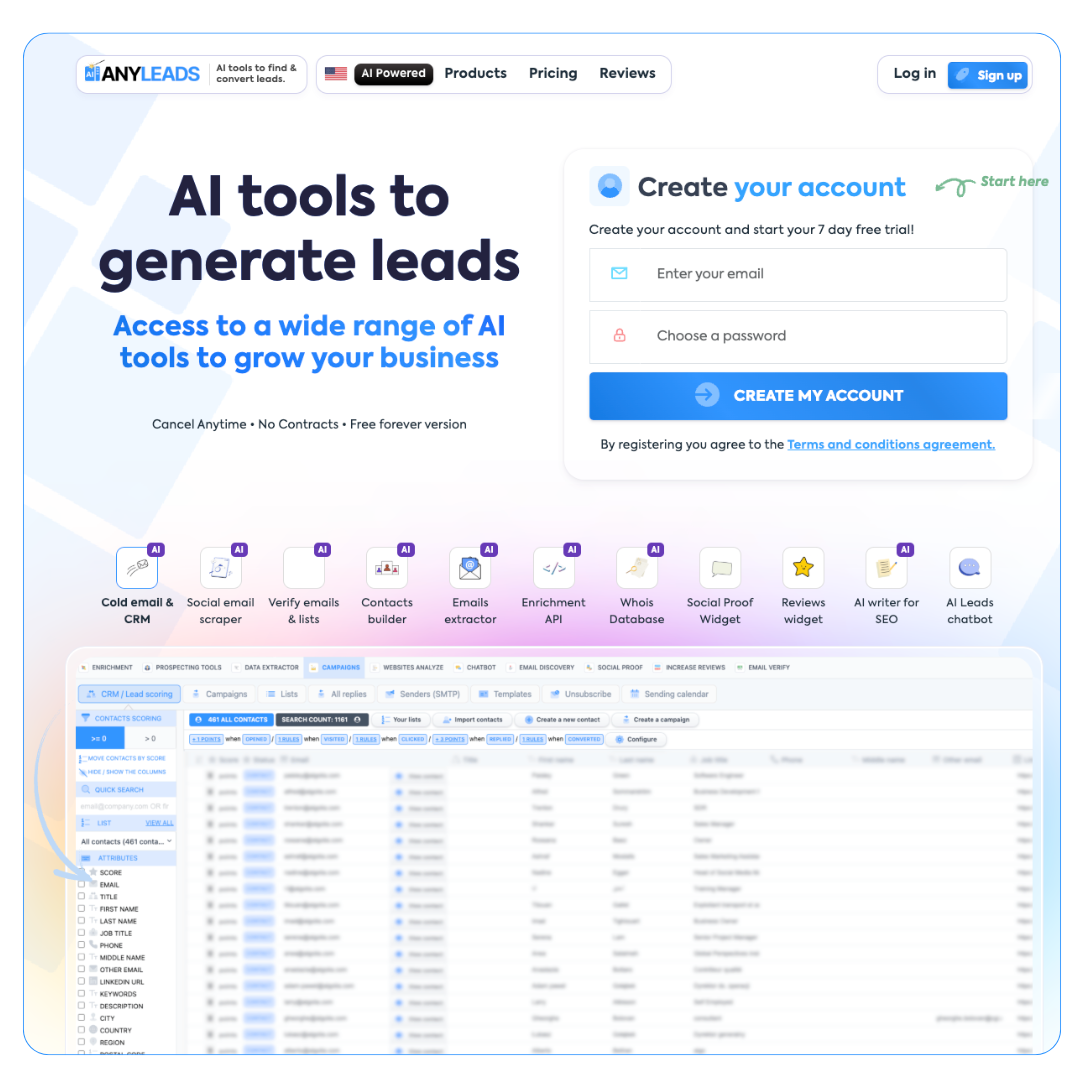 LIMITED SPOTS
All plans are 30% OFF for the first month! with the code WELCOME303
LIMITED SPOTS
All plans are 30% OFF for the first month! with the code WELCOME303

 LIMITED SPOTS
All plans are 30% OFF for the first month! with the code WELCOME303
LIMITED SPOTS
All plans are 30% OFF for the first month! with the code WELCOME303


Insurance is one of the most competitive niches. Whether you’re selling health, life, auto, or home coverage, acquiring high-quality prospects is the backbone of your business. There are many insurance lead generation strategies, each with its own distinct scalability and potential profitability.
Many carriers combine in-house and affiliate marketing-based insurance lead generation to enhance lead quality, scale faster, and optimize costs. Here’s a closer look at both strategies and how you might integrate them for your own business.
It’s a strategy where an insurance company (or agency) takes complete control of the sales funnel. To make it work, you must be capable of building high-performing lead generation campaigns from the ground up.
So, if you don’t have a full-fledged marketing team at the moment, you need to hire experienced marketers and use comprehensive tools. Your staff must leverage the latest and fullest data-driven insights to optimize campaigns, identify the right audience segments, and continuously improve lead quality.
If you want to run a successful in-house insurance campaign, your team needs solid skills in the following areas:
Organic content marketing: SEO blogs and social media help you capture insurance leads in the long run.
Paid ads: You can use Google Ads, Facebook Ads, LinkedIn, or native ads to promote your brand or insurance products.
Landing pages and forms creation: They should encourage users to share their contact information.
Email marketing and nurturing sequences: Users need time to decide which insurance plan suits them most. Personalized lead nurturing through affordable email marketing platforms gently guides each prospect towards the purchase.
Call centers or sales reps: You should have a team of persuasive sales agents who will help you close the deal over the phone or through email correspondence.
In this situation, instead of paying affiliates for the prospects they bring, you are generating insurance leads on your own. This strategy gives you control over the entire sales funnel, ensuring that every message in these campaigns aligns with your standards.
You can adopt any lead generation software, since you have full control over the process without being accountable to third parties.
However, this strategy has some drawbacks. The most notable aspect is the high upfront investment, as you need to hire a marketing team, pay for the tools they will use, and allocate your own budget for paid ads.
It’s a performance-based business model where affiliates (publishers) generate insurance leads for advertisers (merchants). They will earn money only if the prospect takes the target action. Typically, most advertisers pay for the contact information. However, you can set any action as the “target”, such as visiting a landing page, filling out a form, making a call, or comparing.
Here, you act as a merchant who joins the network to tap into a ready-made pool of partners. You can create multiple affiliate marketing programs: one for collecting life insurance leads nationwide, another for car insurance in California, and so on. Each of them can have different guidelines, including preferred channels and messaging standards.
Affiliate marketing can help you scale faster, since publishers typically have established traffic sources. So, you don’t need such a heavy upfront investment in the in-house content creation or paid ads.
However, the trade-off of such collaborations is that you typically have less control over the process. You don’t always know exactly how or where publishers are sourcing prospects.
That’s why you need to work only with reputable networks and affiliates, since they follow the latest compliance requirements and deliver insurance leads that meet your standards.
You can even ask them to use only certain digital marketing channels and practices. For instance, you can request that publishers use their blogs and paid ads to generate prospects, and affiliate email campaigns to gently nurture them until they are ready to take a target action.


Now, when you have a clear understanding of each option, you may want to explore how to combine them for your business. To save you time, we’ve gathered all the key points in one table.
| Feature | In-House | Affiliate Network |
| Control | Full control over campaigns, messaging, and compliance. | Limited control, as affiliates manage traffic and ad methods. |
| Cost Structure | High upfront investment in ads, tools, and staff; cost per lead varies with optimization. | Pay only for completed target actions, resulting in a lower upfront cost. |
| Scaling Speed | Slower, since you need to set up a campaign on your own and test every hypothesis before you get any results. | Faster, as you collaborate with publishers who have existing traffic sources. |
| Lead Quality | Typically high, since you manage lead collection and nurturing processes. | Variable, since it depends on the affiliate. |
| Data Ownership | Full access to all prospect data, analytics, and customer insights. | Partial access. Some networks can provide you with limited lead data. |
| Flexibility | Complete freedom to design the customer journey and adjust funnels. | Some flexibility, but must align with affiliate methods and policies. |
| Compliance Risk | Lower, as you do everything on your own. | Higher risk if affiliates do not follow industry rules. That’s why you should work only with reputable networks. |
Just like in any marketing activity, there is no “one-size-fits-all” solution. You need to evaluate your specific situation to find a mix of insurance lead generation strategies that suits your case.
Both options have their pros and cons. Suppose you’re entering a new market or need a quick influx of insurance leads without building out complex campaigns from scratch. In that case, affiliate collaboration helps you quickly scale while paying only for results.
On the other hand, in-house insurance lead generation shines when you want to have full control over your promotions. If you want to have full control over your campaigns, focus on this strategy. Here you’ll have control over all lead nurturing, so you can be sure that the promotion totally suits you.
By combining both options into a hybrid model, companies can execute agile lead generation strategies, keep a steady prospect pipeline, and expand their reach.
It’s the process of attracting and nurturing prospects who have an interest in buying insurance policies. Your main aim is to motivate users to convert into policyholders.
You need to use organic in-house promotion, such as SEO-optimized content, social media, email newsletters, referral programs from your current clients, and networking. While you continue to invest your time, efforts, and money in the domain of web hosting and content creation, these methods can naturally attract prospects.
It can be an e-book, a free quote, a checklist, a webinar, an insurance calculator, or any other relevant resource. Just make sure that this magnet provides information that motivates users to exchange their contact info.
Yes, email templates help affiliates provide consistent yet tailored messaging. Well-crafted templates simplify the communication between affiliates and prospects, help them build trust, and improve response rates.